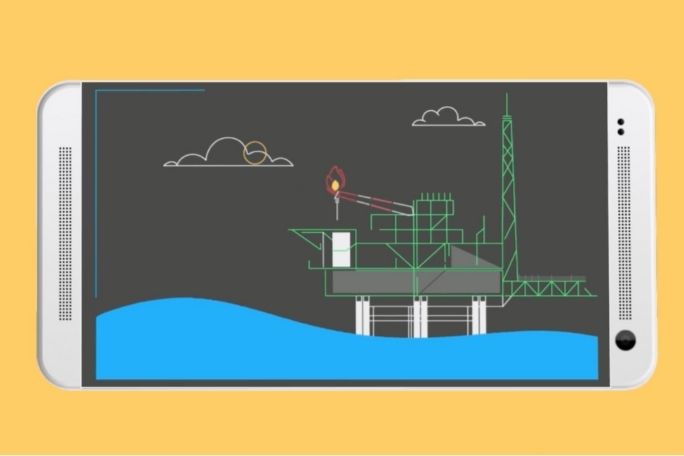Lesson summary
This lesson is part of a unit that explores the life-cycle of mobile phone materials through game-based learning. By playing a game in this lesson, students will understand the process of mining. This game is a hands-on experience that shows students the impacts of finding, extracting and transporting raw materials. At the end of the lesson, students will reflect specifically on how the mining process impacts the environment. Finally, students will explore how important it is to minimise the impacts of resource handling by recycling materials that are already extracted.
Learning intentions:
Students will...
- understand resource scarcity, mining and its environmental impacts
- understand the value of rare, non-renewable materials, and the importance of respecting them
- engage in game-based learning activities
- model the mining process, from exploration and surveying to transportation.
Success criteria:
Students can...
- identify the materials in mobile phones
- explain where the materials used in mobile phones come from and how they are obtained
- describe the environmental impacts caused by extracting resources
- work collaboratively to solve problems.
Lesson guides and printables
Lesson details
Curriculum mapping
Australian curriculum content descriptions:
Year 4 – Humanities and Social Sciences:
- The use and management of natural resources and waste, and the different views on how to do this sustainably (ACHASSK090)
Years 3&4 – Design and Technologies:
- Investigate the suitability of materials, systems, components, tools and equipment for a range of purposes (ACTDEK013)
Year 4 – Science:
- Natural and processed materials have a range of physical properties that can influence their use (ACSSU074)
- Earth’s surface changes over time as a result of natural processes and human activity (ACSSU075)
Syllabus outcomes: GE2-2, GE2-3, ST2-13MW,
General capabilities: Critical and Creative Thinking, Ethical Understanding
Cross-curriculum priority: Sustainability
Relevant parts of Years 3 & 4 achievement standards:
Year 4 – Humanities and Social Sciences:
Students examine the concept of sustainability, and its application to resource use and waste management, past and present, by different groups.
Years 3 & 4 – Design and Technologies:
Students examine social and environmental sustainability implications of existing products and processes to raise awareness of their place in the world.
Year 4 – Science:
Students broaden their understanding of classification and form and function through an exploration of the properties of natural and processed materials.
Unit of work: MobileMuster – Hands-on Mobile Phone Recycling – Years 3-6
Time required: 90+ mins
Level of teacher scaffolding: High – Teacher will need to explain new concepts, set up and oversee complex activities
Resources required
- Student worksheets – one per student
- One copy of the ‘Mobile Phone Worksheet’ per two students
- One printed copy of the ‘Mobile Phone Worksheet Answers’ a downloaded copy ready to project for the class
- A device capable of presenting videos and this MobileMuster Flipbook to the class
- A class set of devices with internet access for paired research
- Scorecard (one per group of approx. 4 students) Note – this one scorecard can be used across all lessons in this unit of work.
- Materials to make model mines:
- Either a sandpit that can fit the whole class OR 1 sand-filled tray per 4 students
A range of ‘mining tools’ for each group, which will vary depending on the ‘mine’ you are using. Sandpit could be toy diggers, plastic spades, wooden poles as drills, etc. Whereas clay/plasticine might require toothpicks, tweezers, skewers, forks, spoons and straws or pipes as drills - Toy trucks or buckets for transporting materials for processing
- 2x Bucket/container
- 5x dollar coins
- 5x ten cent pieces
- 5x 20 cent pieces
- 5x 50 cent pieces
- 5x one or two cent pieces or scoria rocks
- 5x grey rocks
- 5x small magnets
- 5x five cent pieces
- 5x aluminum Foil
- 5x marbles
- Either a sandpit that can fit the whole class OR 1 sand-filled tray per 4 students
Note: The above materials to make model mines are only suggestions. You could substitute these items with any other safe items such as different coloured pieces of plastic, cut up metal strips from a science supply company, marbles, or chocolate money!
Skills
- Collaboration
- Ethical understanding
- Global citizenship
- Problem solving
Additional info
This lesson has been developed as part of Planet Ark’s National Recycling Week. Following this lesson plan is an ideal way for your school to take part in MobileMuster. You’ll be joining thousands of amazing teachers in making a difference and creating positive environmental change. Take part in the Schools Recycling Right Challenge for Planet Ark’s National Recycling Week. Register your lesson or other activities today!


Welcome back!
Don't have an account yet?
Log in with:
By signing up to Cool.org you consent and agree to Cool's privacy policy to
store, manage and process your personal information. To read more, please see
our privacy policy here(Opens in new tab).
Create your free Cool.org account.
Many of our resources are free, with an option to upgrade to Cool+ for premium content.
Already have an account?
Sign up with:
By signing up to Cool.org you consent and agree to Cool's privacy policy to
store, manage and process your personal information. To read more, please see
our privacy policy here(Opens in new tab).